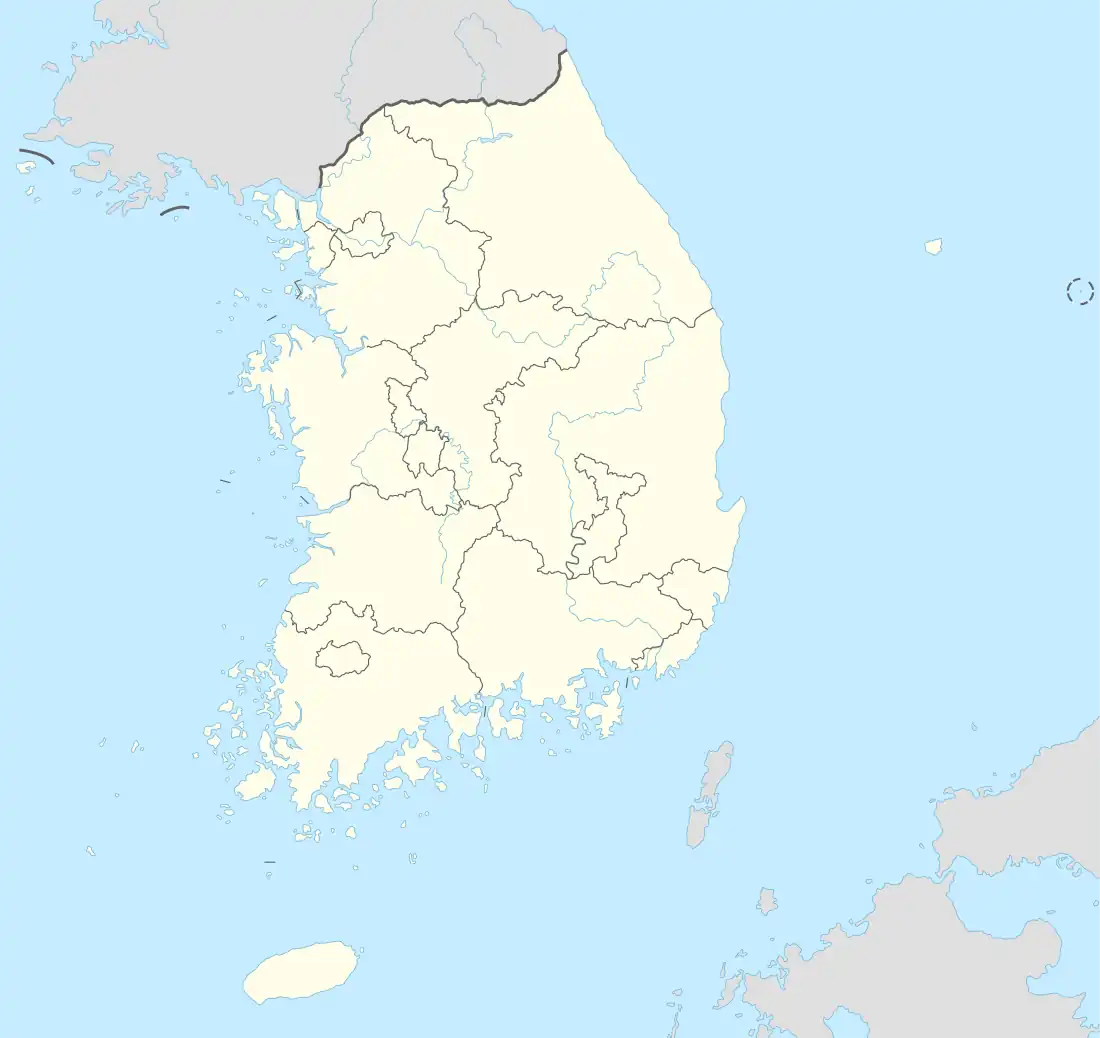| Jangneung | |
|---|---|
 Jangneung | |
| Location | 60 Galhyeon-ri, Tanhyeon-myeon, Paju, Gyeonggi Province[1] |
| Coordinates | 37°46′25″N 126°42′29″E / 37.773592°N 126.708072°E |
| Area | 0.345 km²[1] |
| Governing body | Cultural Heritage Administration of Korea |
| Type | Cultural |
| Criteria | iii, iv, vi |
| Designated | 2009 (33rd session) |
| Reference no. | 1319 |
| Region | Asia and Australasia |
| Korean name | |
| Hangul | |
|---|---|
| Hanja | |
| Revised Romanization | Jangneung |
| McCune–Reischauer | Changnŭng |
Jangneung is a burial ground from the Joseon dynasty, where King Injo and his first wife, Queen Inyeol, were entombed.[1] Located in Paju, Gyeonggi Province, it is recognized as an UNESCO World Heritage Site.
History
It was originally built in 1635 in Uncheon-ri, Paju, but due to a fire, scorpions and snakes found refuge in the sculptures surrounding the tomb and thus the relocation became necessary. In 1731 it was moved to Galhyeon-ri. As characteristic of 17th century Korean art, the tomb is decorated with peony and lotus design.[1][2][3]
References
- 1 2 3 4 "Jangneung Royal Tomb, Paju". Cultural Heritage Administration. Retrieved 2015-11-28.
- ↑ "파주 장릉" (in Korean). CHA. Retrieved 2015-11-24.
- ↑ Cultural Heritage Administration. Nomination of Royal Tombs of the Joseon Dynasty for Inscription on the World Heritage List (pdf). UNESCO. p. 148. Retrieved 2015-11-29.
This article is issued from Wikipedia. The text is licensed under Creative Commons - Attribution - Sharealike. Additional terms may apply for the media files.